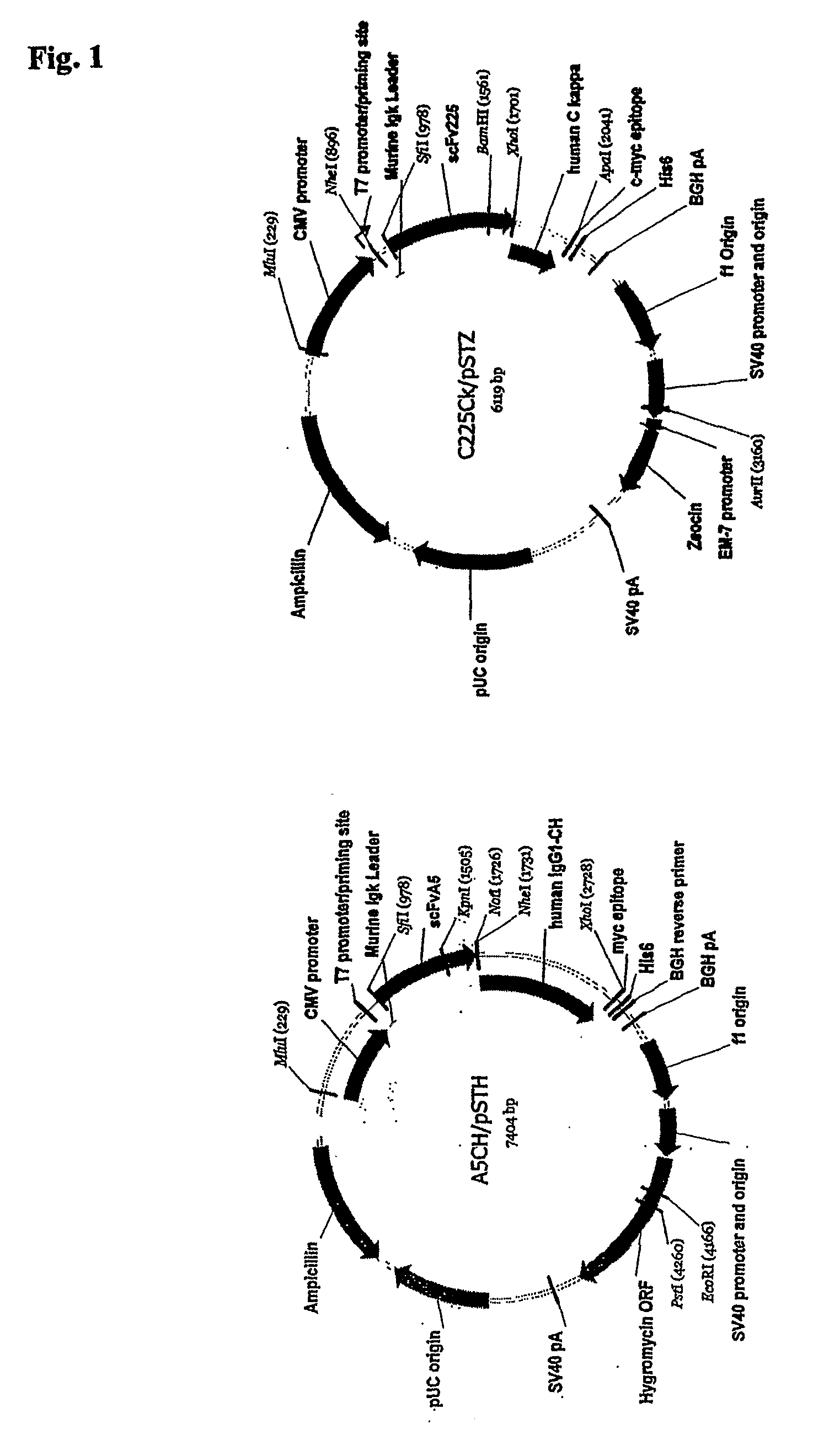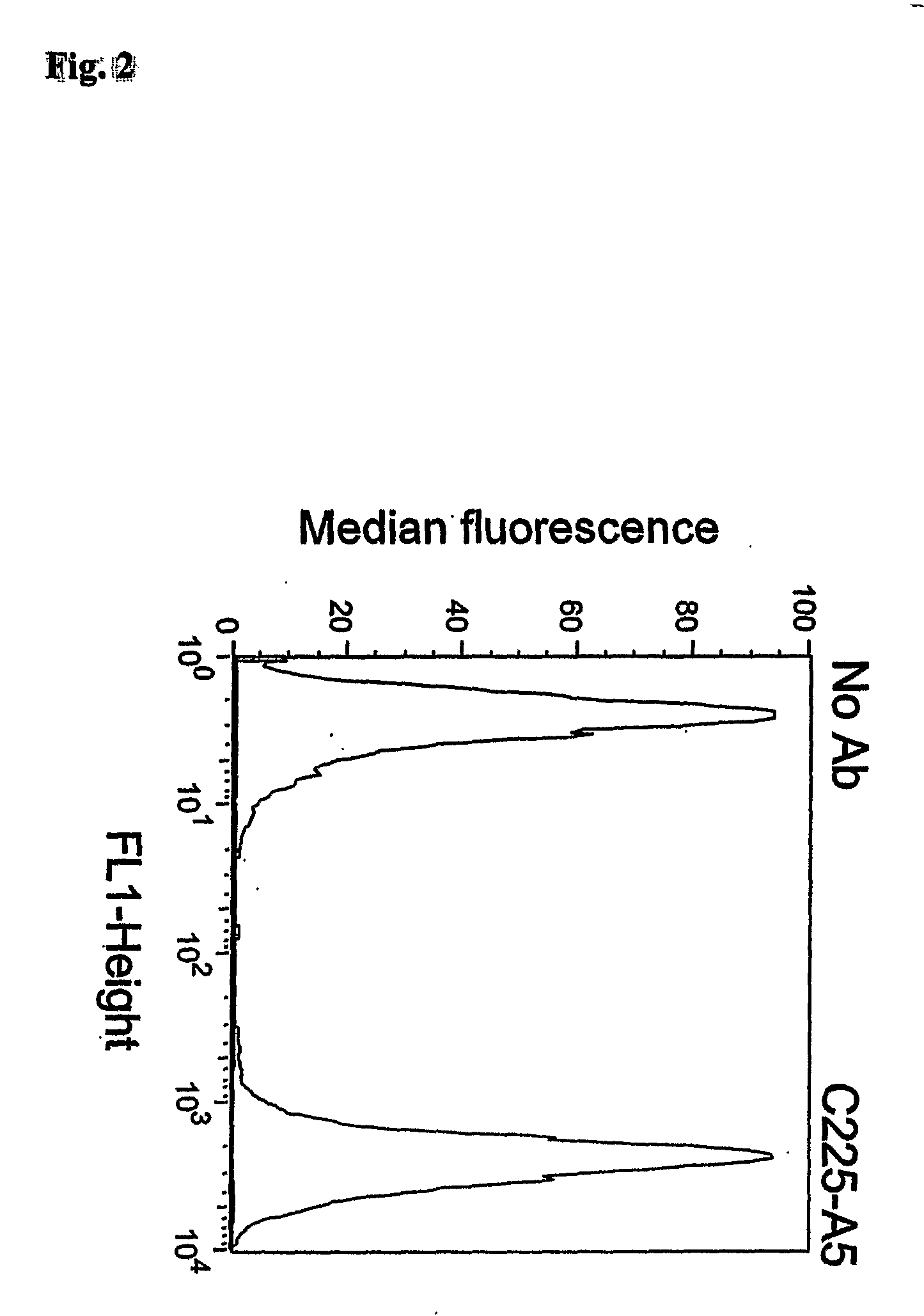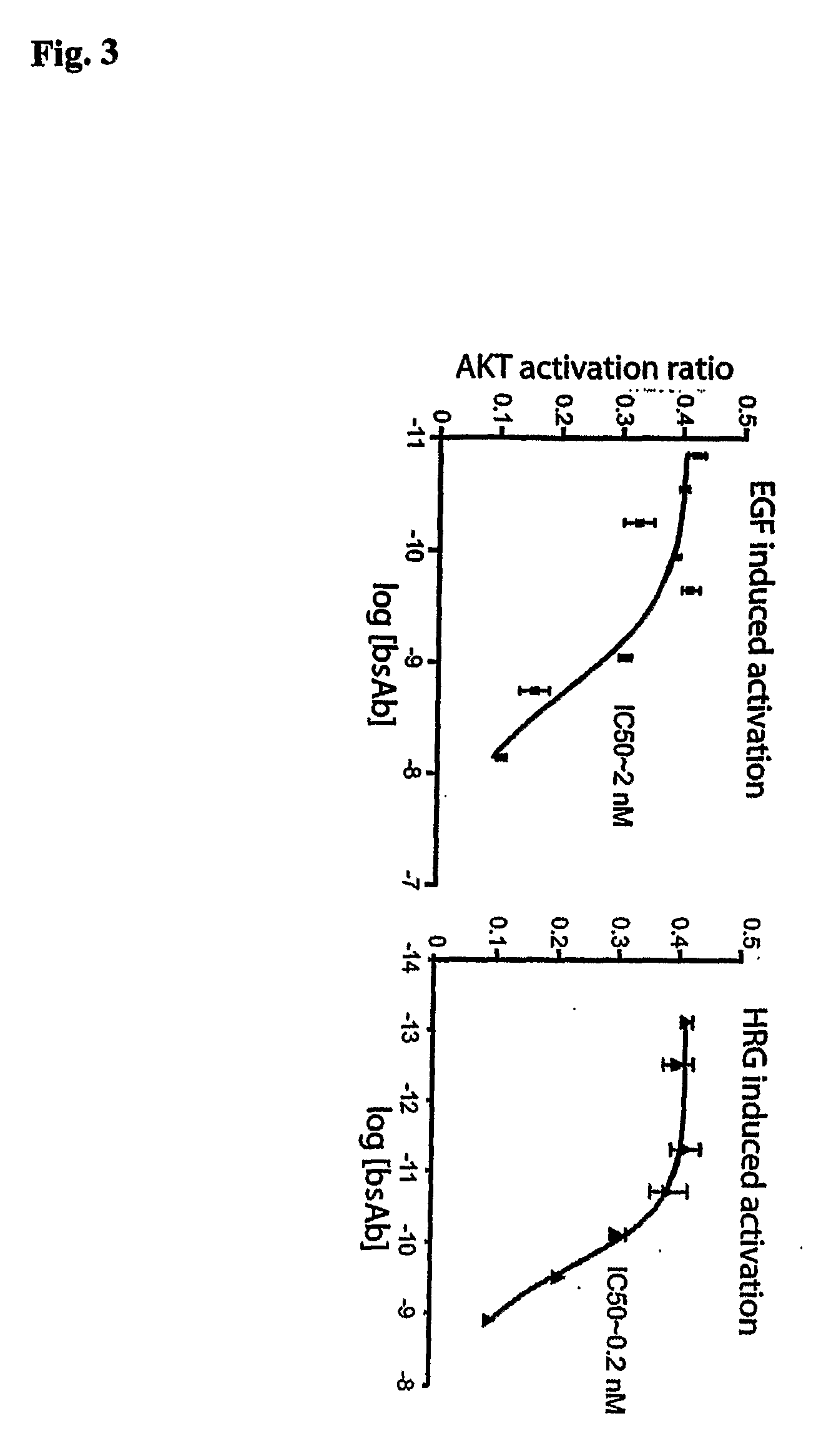Bispecific binding agents for modulating biological activity
a technology of biological activity and binding agent, applied in the field of bispecific binding agent for modulating biological activity, can solve the problems of limited range of molecules that can be used as targets for bsbas, affecting the survival rate of patients, so as to reduce the activity of a tyrosine kinase receptor, modulate biological activity, and inhibit the proliferation of cancer cells
- Summary
- Abstract
- Description
- Claims
- Application Information
AI Technical Summary
Benefits of technology
Problems solved by technology
Method used
Image
Examples
example 1
Diabodies and (scFv)2
[0186]The production of diabodies is disclosed, for example, in EP 404,097; WO 93 / 11161; and Hollinger et al. (Proc. Natl. Acad. Sci. USA, 90:6444-6448, (1993)). Diabodies are constructed from antibody fragments, usually from two scFv's, by using a linker that is too short to allow pairing between the two domains on the same chain; the domains are forced to pair with the complementary domains of another chain and create two antigen-binding sites. Alternatively, two scFv's may be linked by a genetically encoded linker that covalently links the two molecules thereby forming a (scFv)2 that is a bivalent antibody.
example 2
[0187]Different types of “dimerization domains” may be used to heterodimerize two antibody fragments. For instance, by genetically fusing a bispecific / divalent diabody to, via the hinge region, the N-terminus of the CH(3) domain of an IgG (Lu et al. J Immunol Methods. 2003 August; 279(1-2):219-32), creating a construct termed a “di-diabody”. The result is a tetravalent diabody dimer resulting from dimerization between the hinge region and the CH(3) domains.
[0188]The natural CH1 domain of an antibody may also be used to heterodimerize two antibody fragments by genetically fusing a single-chain Fv (scFv) to the C-terminus of either the light chain or the heavy chain of a Fab fragment of different antigen-binding specificity (Lu et al. Immunol Methods. 267(2):213-26 (2002)). The natural dimerization mechanism between IgG heavy and light chains may also be used. Two single-chain Fv (scFv) of different specificity can be fused to the constant domain of human kappa chain (C(L)) and the fi...
example 3
Determining Suitable Target and Effector Markers
[0189]Suitable target markers may be determined in a number of ways such as by mRNA profiling of target and non-target tissue to identify target molecules that are over-expressed in target tissue, or by proteomic methods such as 2D electrophoresis of target and non-target cells for comparison of protein expression levels and subsequent identification by mass spectroscopy.
[0190]For example, mRNA profiling typically employs Affymetrix microarrays and is performed as described in Cao et al (BMC Genomics. 5(1):26 (2004)) by comparing cRNA prepared from target and non-target tissue (e.g. tumor and adjacent normal tissue)
[0191]In proteomic methods, target and non-target cells are typically lysed or homogenized and then subjected to electrophoresis in two dimensions. The proteins are then fixed in the gel and stained for visualization. Image analysis of the gels from the target and non-target cells can reveal proteins spots than are different...
PUM
| Property | Measurement | Unit |
|---|---|---|
| Molar density | aaaaa | aaaaa |
| Molar density | aaaaa | aaaaa |
| Molar density | aaaaa | aaaaa |
Abstract
Description
Claims
Application Information
 Login to View More
Login to View More - R&D
- Intellectual Property
- Life Sciences
- Materials
- Tech Scout
- Unparalleled Data Quality
- Higher Quality Content
- 60% Fewer Hallucinations
Browse by: Latest US Patents, China's latest patents, Technical Efficacy Thesaurus, Application Domain, Technology Topic, Popular Technical Reports.
© 2025 PatSnap. All rights reserved.Legal|Privacy policy|Modern Slavery Act Transparency Statement|Sitemap|About US| Contact US: help@patsnap.com



